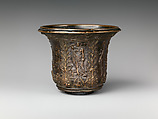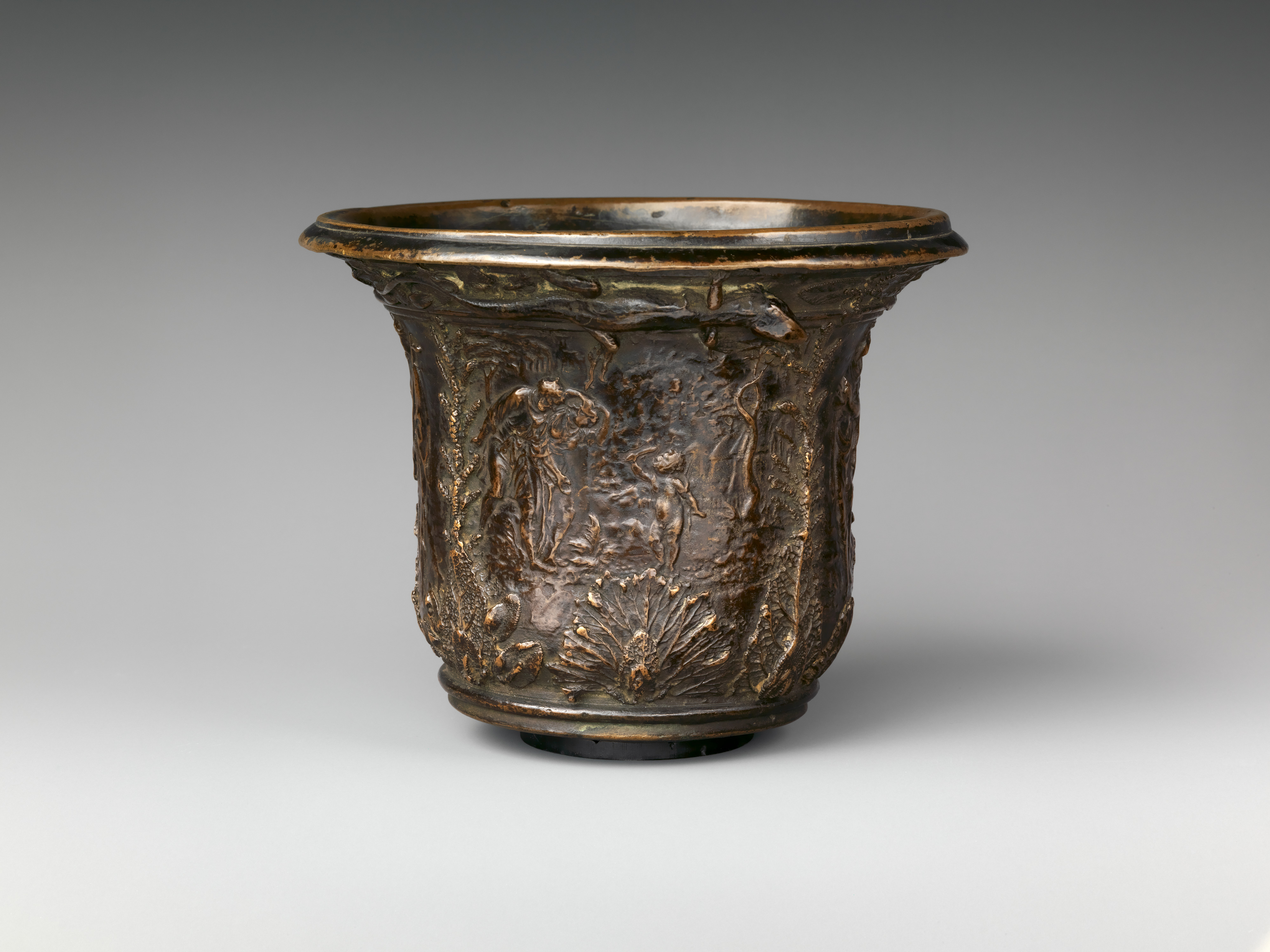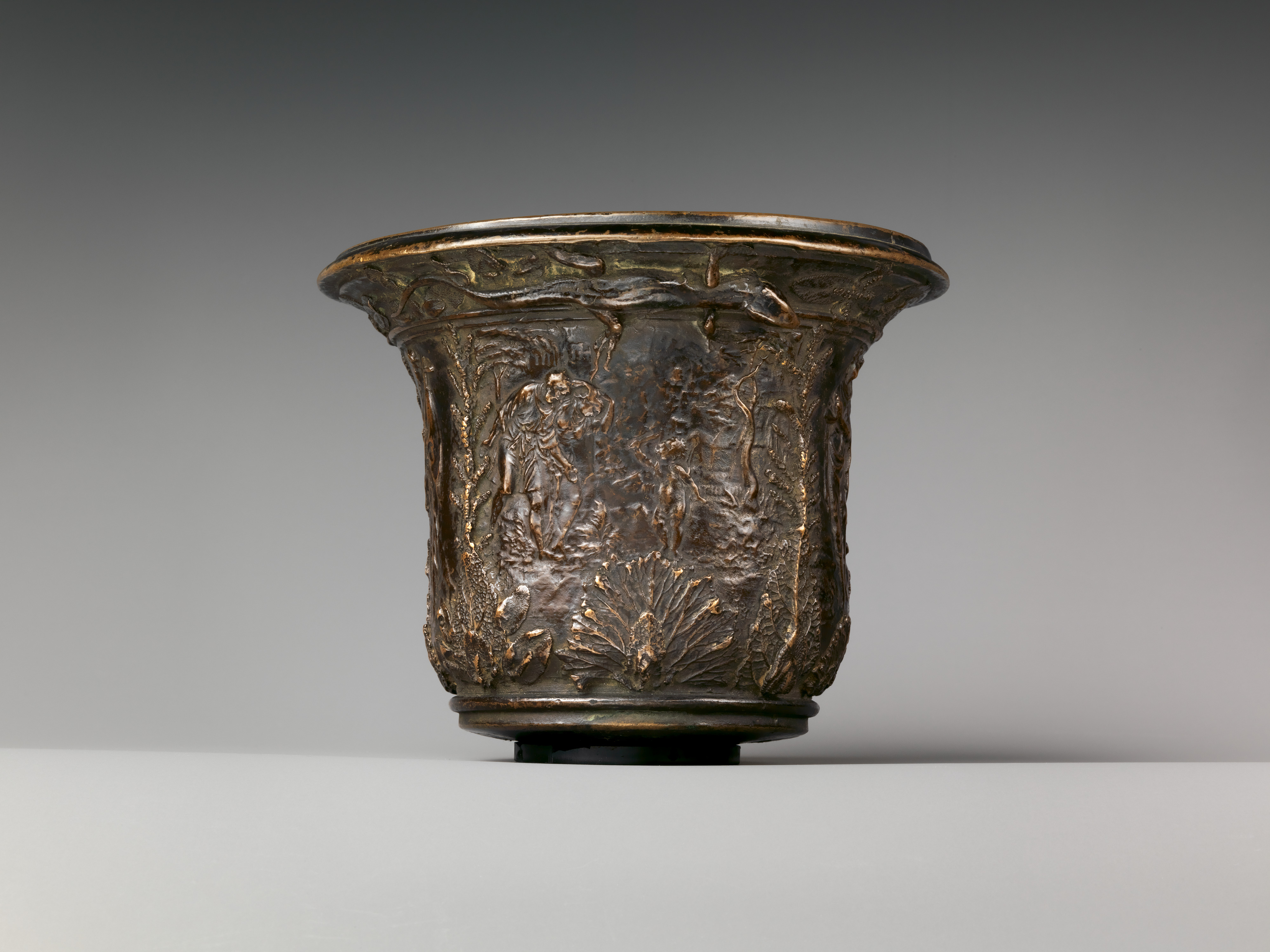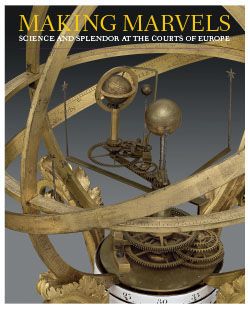Mortar
Wenzel Jamnitzer German
Mortars were essential to everyday sixteenth-century life.[1] Indeed, since time immemorial, examples in various sizes and in materials including wood, stone, and several metal alloys have been used in domestic settings to grind seeds, grains, spices and herbs, medicines, and cosmetics.[2] Of the highest virtuosity, this mortar epitomizes the type of object intended for a patrician or princely Kunstkammer. Its bronze decorations boast powerfully expressive imagery through the revolutionary technique of life casting (see pp. 45–47 in this volume and cat. 70).[3]
At the time of its creation, the mortar would have been under-stood both as a precious display object, demanding the close atten-tion of those handling it, and as a functional item that represented the secretive arts of pharmacy and alchemy (see the essay by Ana Matisse Donefer-Hickie in this volume and cats. 73–78). The intriguing decoration contains some elements seemingly designed to surprise, and others—like the lizard slithering below the mortar’s rim—to inspire a frisson of the macabre. The slightly concave frieze is decorated with ornamentally arranged clary sage leaves (Salvia sclarea). Sprays of wolf’s-foot (Lycopodium clavatum), partially overlapped by cowslip (Primula officinalis) and garden sage (Salvia officinalis), grow upward from the base. These life-cast plants are all medicinal herbs, which alternate with five allegorical reliefs: Hope is shown in prayer; a putto sleeping in a bucolic landscape, one leg resting on a skull, represents Vanity; and personifications of Sin (or Arrogance) and Faith follow, the former a winged figure gazing into a mirror, the latter holding a cross and chalice below a Communion wafer. The fifth relief depicts an elderly couple rushing toward a blindfolded boy, which may represent the sense of touch.
The figures were inspired by a series of plaquettes by Peter Flötner.[4] The symbolism conveys the prestigious status then assigned to local pharmaceutical herbs; here incorporated as life casts, they are elevated to the same level as naturalia from exotic lands. The object’s bold complexity is characteristic of the flowering of the Renaissance north of the Alps, and of the creative artistic environ-ment of Nuremberg, which in the sixteenth century had become a prosperous trading center for luxury objects.[5]
Footnotes
(For figures and other catalog entries mentioned as well as a key to the shortened bibliography references see Koeppe, Making Marvels: Science & Splendor at the Courts of Europe: The Metropolitan Museum of Art, 2019)
1. I thank Virginie Spenlé of the Kunstkammer Georg Laue, Munich, for sharing much information about this mortar with me.
2. Motture 2001; Victoria Avery in V. Avery, Calaresu, and Laven 2015, pp. 41, 264, no. 18, fig. 31.
3. The mortar is discussed extensively in Spenlé 2014; Spenlé 2016. See also Laue 2016, pp. 56–57 (listing all known comparable examples).
4. See Dedo von Kerssenbrock-Krosigk in Art and Alchemy 2014, p. 127, no. 52. Compare Jamnitzer’s work here to his black-chalk drawing Urania (MMA 2001.111); see Freyda Spira in Alsteens and Spira 2012, pp. 92–93, no. 42.
5. Maué et al. 2002.
Due to rights restrictions, this image cannot be enlarged, viewed at full screen, or downloaded.
This artwork is meant to be viewed from right to left. Scroll left to view more.





